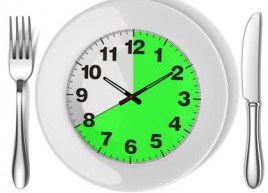Feeding a picky eater can be stressful and frustrating. It’s hard to know what to do when your child is constantly refusing to eat certain foods. But don’t worry there are a few simple tips and tricks you can use to make meals easier for everyone. Here are 10 tips for picky eaters that may help.
1. Involve children in meal planning and preparation
Involving your child in the cooking process can help them develop an appreciation for food, as well as an understanding of the effort involved in making a meal. This will also give them ownership over their own food choices, allowing them to decide what they’d like to eat on their own terms.
Here are some great examples of meals that are easy to prepare with kids https://homecookingmemories.com/easy-dinner-recipes-kids-can-help-make/
2. Offer small portions of food at first
If your child is hesitant about trying new foods, offer them smaller portions than you would typically serve so that they don’t feel overwhelmed or intimidated by the size of the plate in front of them. You can always provide them with a second helping when they finish their plate.
Here is a great resource for basic nutritional guidelines for kids https://caringforkids.cps.ca/handouts/healthy-living/healthy_eating_for_children#:~:text=Children%20need%20a%20balanced%20diet,food%20you%20serve%20at%20meals.
3. Make sure there are familiar items on the plate
Having a few familiar items on the plate (like macaroni and cheese, veggie sticks, or crackers) alongside unfamiliar ones gives kids something to rely on if they don’t take to the new item right away. this strategy makes it easier for them to take a risk and try it out without feeling uncomfortable or scared off by unfamiliarity.
4. Introduce one new food at a time
When introducing new foods, start with just one item at a time so as not to overwhelm your child with too much change all at once. Having too many new foods can be intimidating or even scary for some children (especially young ones).
5. Let children choose from two or three options when possible
Giving kids choices within reasonable parameters gives them more control over their meals without overwhelming them with too many options. This helps build trust between parent and child around food choices while also allowing kids some freedom in deciding what they’d like to eat each day/mealtime!
6. Offer healthy snacks throughout the day
Eating healthy snacks throughout the day helps maintain blood sugar levels and keeps kids from getting overly hungry during mealtimes. Doing this makes them more likely to try out new foods when presented with those same items during mealtime. Here are some great healthy snack ideas for the kiddos https://www.healthline.com/nutrition/healthy-snacks-for-kids
7. Don’t force feed
Forcing a child to eat something they don’t like can have a long-term negative effect on both the child’s development and relationship with food. It can make them feel helpless, scared and resentful. This can lead to a lack of trust in their parents, as well as the development of unhealthy habits such as overeating in the future.
Furthermore, forcing children to eat certain foods can lead to an aversion or even dislike towards those foods, which could limit a child’s diet and nutrition later on in life. Additionally, it can often lead to children eating too much at one time, which could contribute to weight problems down the line. On top of that, it may also discourage healthy eating habits as kids become more likely to prefer processed or junk foods since they’re seen as more fun or exciting than nutritious options. It would be far better for parents to encourage their children’s desire for healthy food by providing plenty of nutritious options and showing interest in what they’re eating instead of dictating what they consume.
Forcing kids to eat something they don’t want could lead to negative associations with that food item in the future. Instead, focus on offering healthy options and letting your child decide how much he/she wants of each item (within reason).
8. Use positive reinforcement
Positive reinforcement goes a long way towards helping kids learn healthier eating habits; praising good behavior (like trying out new foods) will encourage more of it in future dining experiences!
9. Take time out before meals
Taking five minutes out before meals allows both parents and children time alone together. This helps create an atmosphere conducive towards trying new things without fear of judgment or pressure from either side.
10. Talk about nutrition
Talking about nutrition doesn’t have to be boring; instead it should focus on why certain foods are beneficial (or not). This information can help form more informed decisions when it comes time for dinner!
Some simple nutritional supplements can also take some of the stress off of a period of picky eating. See my article on the top 10 supplements for kids health for more information.
Conclusion
Picky eating isn’t easy but there are ways you can make mealtimes less stressful for everyone involved. From including your children in meal planning and preparation processes all the way through offering healthy snacks throughout the day, these ten tips will help make dinnertime easier while still ensuring that your family eats nutritious meals together. If you feel that you require more counseling, feel free to book an appointment.
Any good rock climber knows that in order to perform at your best, you need to take care of your body. That means eating a nutritious diet, appropriate training, sleeping well and staying hydrated. But it can also mean supplementing your diet with the right things to ensure that your body has everything it needs to climb to new heights. Here are 10 of the best supplements for rock climbing.
CBD
CBD, or cannabidiol, is a compound found in the cannabis plant. Unlike its more famous cousin THC, CBD does not have any psychoactive effects. Instead, it has been shown to offer a variety of health benefits, including reducing anxiety and pain. CBD is also being explored as a treatment for several conditions, including epilepsy and Alzheimer’s disease. CBD oil can be taken orally or applied topically, making it a versatile addition to any medicine cabinet.
For athletes, CBD oil has become an increasingly popular way to manage pain and inflammation. CBD is thought to work by interacting with the body’s endocannabinoid system, which plays a role in regulating pain and inflammation. In one study, rock climbers who took CBD before their climb reported reduced pain and inflammation afterwards. CBD is also being explored as a potential treatment for Delayed Onset Muscle Soreness (DOMS), a type of muscle soreness that can occur after exercise. While more research is needed, CBD oil shows promise as a safe and effective way to manage pain and inflammation for athletes of all levels.
Dose: 60mg after training has shown benefit in muscle recovery
Theanine
Theanine is an amino acid that can be found in tea leaves. It is known to have a calming effect on the mind, and it has been shown to improve focus and concentration. Theanine has also been shown to reduce anxiety levels. For these reasons, theanine has become a popular supplement among rock climbers. While theanine can help to improve focus and cognitive function, it is not a miracle drug. Theanine will not make you a better rock climber overnight. However, it can help to improve your mental state while climbing, making it easier to maintain focus and avoid getting overwhelmed by anxiety. If you are looking for an edge while climbing, theanine may be worth considering.
Dose: 100mg has shown improvements in cognitive function.
Protein
Climbing is a strenuous activity that can lead to muscle soreness and fatigue. Adding a protein powder supplement to your diet can help your muscles recover more quickly so that you can get back on the wall sooner. Protein powder is also helpful in preventing injuries since it helps to repair and build muscle tissue. For optimal effects, it is best to take a protein supplement within one hour after climbing.
Dose: 1.2-1.5 grams/kg or 30-33 grams when combined with athletic training.
Iron
Climbing takes a lot of energy, so it’s important to make sure you’re getting enough iron. Iron helps carry oxygen to your cells, which gives you the energy you need to power through a tough climb. If you’re not getting enough iron, you might start to feel fatigued more easily. The best way to get iron is through food sources like red meat, dark leafy greens, and beans. However, if you’re not getting enough from your diet, you might want to consider taking an iron supplement. Just be sure to talk to your doctor first, as too much iron can be harmful.
Dose: Depends on current iron levels. Blood testing may be required. Consult with your doctor or naturopath.
Magnesium
Magnesium is a mineral that is critical for human health. It is involved in over 300 biochemical reactions in the body, including the metabolism of energy, the regulation of blood sugar, and the formation of bones and teeth. Magnesium is also essential for muscle function, and it helps to relieve muscle cramps. For athletes and people who are physically active, magnesium is especially important. This is because Magnesium helps to maintain electrolyte balance and to reduce exercise-induced inflammation.
Rock climbers can benefit from taking magnesium supplements, as this can help to improve their performance and recovery from climbs. Magnesium can also help to prevent injuries by reducing the risk of cramping. For climbers who are looking to improve their results, magnesium may be a valuable addition to their diet.
Dose: Up to 350mg is generally tolerated well.
Creatine
Creatine is a naturally occurring compound in the body that helps to supply energy to cells. It is popular among climbers because it has been shown to improve power and strength output. This can be helpful when you are trying to send a hard route or when you need to pull yourself up a steep wall. Creatine is also one of the most studied supplements on the market, so you can be confident in its safety and effectiveness.
Dose: 20 grams for 5-7 days has shown improvement in both aerobic and anaerobic performance
Beta-Alanine
Beta-alanine is another amino acid that is popular among athletes because it has been shown to improve performance. It works by increasing the amount of carnosine in muscle cells, which helps to buffer lactic acid buildup. This can delay fatigue, arm pump and help you climb for longer periods of time without getting as tired. Beta-alanine is also relatively safe and has been well-studied, so you can be confident in its effects.
Dose: 2-6.4 grams for 3-12 weeks demonstrated improvements in exercise capacity and performance.
Collagen
Collagen is a structural protein that helps to give tissues their strength and elasticity. It is found throughout the body, including in the skin, bones, and tendons. Collagen plays an important role in rock climbing, as it helps to maintain the strength and integrity of the climbers’ hands and feet. Collagen also helps to protect against injury, as it acts as a shock absorber and can help to reduce the impact of falls. In addition, collagen aids in the healing process, helping to repair tissue damage caused by climbing. As a result, collagen is an essential component of rock climbing. without it, climbers would be at a higher risk of injury and would have a difficult time recovering from falls. Taking daily amounts of collagen through supplementation can help ensure that your body has all the required building blocks for collagen synthesis.
Dose: 10-20 grams daily has shown increases in performance.
Ginseng
Ginseng is an herb that has been used for centuries in traditional Chinese medicine. Today, ginseng is commonly taken as a dietary supplement, and it is also said to have many benefits for athletes and outdoor enthusiasts. Ginseng is thought to improve stamina and endurance, and some climbers even swear by it as a way to boost their performance on the rock. Ginseng is available in many forms, including capsules, teas, and tinctures. If you’re interested in trying ginseng for yourself, be sure to talk to your doctor first, as it can interact with some medications.
Dose: 200mg up to 3 times daily for 12 weeks has been shown to be safe. Panax Ginseng can raise blood pressure so it is important to consult with your doctor or naturopath prior to supplementation.
Caffeine
Caffeine is a popular supplement among athletes in general because it has been shown to improve alertness, focus, and power output. This can be helpful when you are trying to maintain focus while climbing. Caffeine is also relatively safe, but it is important to not overdo it as too much caffeine can lead to side effects like jitters and anxiety.
Dose: 2-10mg/kg has shown improvements in athletic performance. Up to 400mg per day has been shown to be relatively safe for most individuals.
Conclusion
These are just a few of the many different supplements that can be helpful for rock climbing. If you are looking to improve your performance, then you may want to consider adding some of these supplements to your diet. As always, make sure to consult with a doctor before starting any new supplement regimen.
References
Isenmann E, Veit S, Starke L, Flenker U, Diel P. Effects of Cannabidiol Supplementation on Skeletal Muscle Regeneration after Intensive Resistance Training. Nutrients 2021;13(9):3028
Foxe JJ, et al. Assessing the effects of caffeine and theanine on the maintenance of vigilance during a sustained attention task. Neuropharmacology. 2012;62(7):2320-2327
McAdam JS, McGinnis KD, Beck DT, et al. Effect of Whey Protein Supplementation on Physical Performance and Body Composition in Army Initial Entry Training Soldiers. Nutrients. 2018;10(9)
McNaughton LR, Dalton B, Tarr J. The effects of creatine supplementation on high-intensity exercise performance in elite performers. (abstract) Eur J Appl Physiol Occup Physiol 1998;78:236-40
Hobson RM, Saunders B, Ball G, et al. Effects of ß-alanine supplementation on exercise performance: a meta-analysis. Amino Acids 2012;43:25-37
Jendricke P, Kohl J, Centner C, Gollhofer A, König D. Influence of specific collagen peptides and concurrent training on cardiometabolic parameters and performance indices in women: A randomized controlled trial. Front Nutr. 2020;7:580918.
Sorensen H, Sonne J. A double-masked study of the effects of ginseng on cognitive functions. Curr Ther Res 1996;57:959-68.
Greer F, Friars D, Graham TE. Comparison of caffeine and theophylline ingestion: exercise metabolism and endurance. J Appl Physiol 2000;89:1837-44
Intermittent fasting is a different way of thinking about eating.
I’m suggesting that the majority of people have been eating too much and too often. I’m suggesting that breakfast is not the most important meal of the day. By following a few simple guidelines my readers can loose weight, feel great and be healthier than ever before. The guidelines are:
- “6 to 8 and feel great”
- “Eat what you need”
- “Respect your food, respect yourself”
6 to 8 and feel great
Everyday eat within a 6 to 8 hour time frame. If you eat breakfast at 7:00am then your last meal of the day should not be later than 3:00pm. If you eat lunch at 12:00pm then your next and last meal should be no later than 8:00pm. In the first scenario you are basically skipping dinner and in the second scenario you are skipping breakfast. Water, tea, and even coffee are allowed outside of the 6-8 hour allotted time frame as long as there is no added calories, i.e. sugar, milk and or cream. There is also no snacking outside of your 6-8 hour window.
Now let me tell you why and how intermittent fasting works. Immediately after eating, a hormone in your body called insulin rises. Insulin tells your body to burn carbohydrates (sugar) for energy and to store whatever hasn’t been used in your liver and fat cells. This process continues for approximately 4 hours after eating. After 4 hours insulin drops and your body begins to dip into stored sugar and fat reserves for energy; or in other words that’s when you start burning fat.
It’s common practice for most people to eat 3 times a day with snacks in between, this means that we almost never dip into our fat stores. Therefore you would have to do some intensive daily exercise or eat incredibly small portions to loose weight. By following the 6-8 rule; you can almost be certain that you will be burning fat for approximately 10-12 hours per day. The only thing keeping you from shedding excess pounds is by being excessive with portion size and calorie intake, which brings us to the next guideline “eat what you need”.
Eat what you need
This guideline basically translates to portion control. One advantage about using the 6-8 methodology is that you will start becoming more in tune with your body and more aware of hunger and satiety. It is a great feeling to eat when you are actually hungry rather than out of habit. When we experience hunger, food is digested better. Hunger causes your gastrointestinal tract to prepare for food, including ample amounts of stomach acid aiding in the proper breakdown and absorption of nutrients.
Pay close attention to the point at which you no longer feel hunger and you are adequately satiated. Do not overeat. Eat to a point that you feel satisfied but not heavy and bloated. You may notice that portion sizes become smaller. Now, because we are eating only two meals per day, it is also important that when we eat, we eat nutritious food and a variety of foods. Which brings us to the next guideline.
Respect your food; respect yourself
This guideline is about what kind of food you eat and how you eat it. As mentioned in the previous section, since we are essentially eating only twice per day, we want to be putting high quality foods into our body. Fresh, local and organic foods are what you want to focus on. The great thing about this diet is that it there are no restrictions on foods, it’s more about quality. Try to have meals that have a good quality protein, and complex carbohydrates such as veggies and whole-grains.
While making healthy choices is very important, it is also just as important not to stress over your food. Do your best to cook healthy while acknowledging that sometimes you will find yourself eating out, ordering fast food, and having desserts. Don’t beat yourself up about the choices you make, love whatever it is your eating, own it and do your best to eat healthy most of the time. Love your food and love yourself.
Final Thoughts
The guidelines I have purposed, although expressed in an original way, are not new concepts. Eating within a 6-8 hour window is also known as intermittent fasting; a lifestyle and medical intervention that shown to have a multitude of health benefits including lowering blood pressure, staving off cardiovascular disease and improving longevity. Presenting these ideas in away that is easy to incorporate into a daily routine can help to improve the lives of many people. I encourage you to try it out, give it a few weeks and let me know how you feel.
Fitness trainer Mike O’Donnell (2 meal mike) does a great job of further explaining intermittent fasting and how to easily incorporate it into your daily routine. I encourage you to visit his site http://www.theiflife.com






